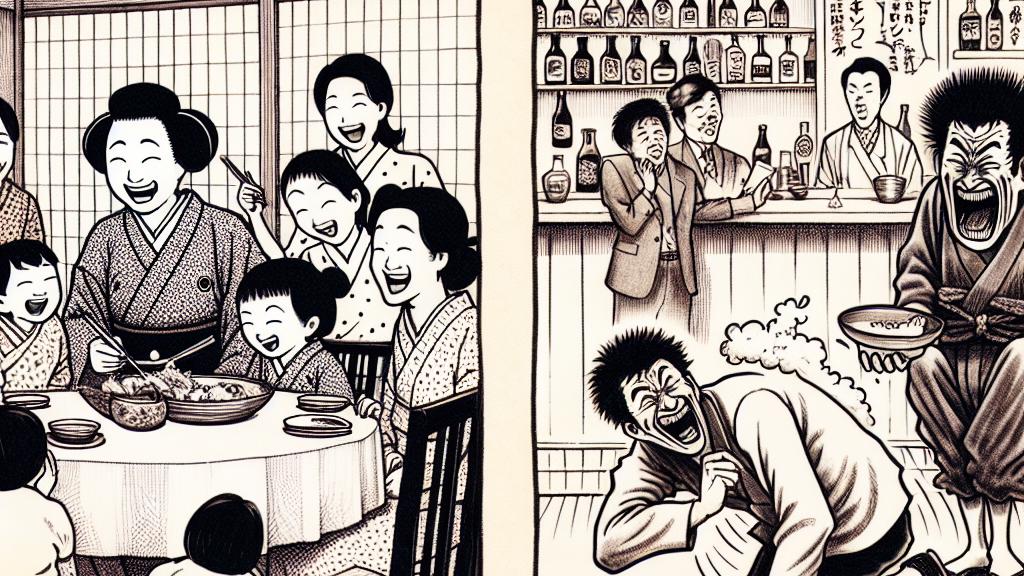Exploring the Differences in Humor Between Genders
Overview
- Delve into how humor is perceived differently between genders in diverse cultural contexts.
- Analyze the storytelling dynamics essential to emotional connections within relationships.
- Evaluate the broader implications of gendered communication styles on interactions.

Cultural Context: Humor in Japan
In the rich tapestry of Japanese culture, discussions about gender differences in humor reveal illuminating insights into societal norms. Humor, often viewed as both relational and communicative, functions not merely as a source of laughter but as a vital lens through which we experience everyday life. For instance, consider a woman sharing a humorous yet relatable tale about a cooking disaster that unexpectedly drew her family closer together. This not only showcases her ability to find humor in mishaps but also highlights how emotional experiences enhance connections. Conversely, when men share humorous anecdotes, they frequently lean toward clever wordplay or absurd scenarios. Picture a man recounting a comical misadventure at a bar, where his fanciful attempt to impress someone spiraled into chaos; while amusing, this type of story might lack the emotional depth that often resonates with women. Thus, understanding these distinctions invites us to explore the cognitive and emotional frameworks to grasp how varying humor styles can inform and enrich interpersonal relationships.
The Vital Role of Emotional Resonance in Storytelling
Humor serves as more than just a mechanism for entertainment; it is crucial for forging emotional connections. Women often utilize storytelling to share heartfelt experiences that resonate deeply. For example, sharing a laugh about an awkward family dinner might evoke amusement, creating a warm and relatable atmosphere that fosters bonding. On the other hand, when men engage in storytelling, they might prioritize witty punchlines or outrageous exaggerations. Imagine a scenario in which a woman opens up about her struggles during a difficult time, hoping for empathy, but instead receives a lighthearted joke from her partner. This misalignment underscores a vital aspect of communication: humor is not solely about amusement; it is fundamentally intertwined with emotional engagement, weaving a rich tapestry of dialogue that nurtures understanding and connection between partners.
Bridging Communication: Understanding Humor Across Genders
Recognizing the intricate nuances of humor between genders offers transformative possibilities for enhancing communication in various contexts. In relationships—whether they be friendships, familial bonds, or professional affiliations—acknowledging these differences can pave the way for more profound interactions. Take for instance, the dynamic within collaborative teams; fostering an environment that appreciates both emotional intelligence and humor could lead to improved morale and creativity. Engaging in storytelling workshops or humor training could equip individuals with the skills to articulate vivid narratives, creating a captivating exchange of ideas. Imagine how much richer a brainstorming session could become if team members felt empowered to share both innovative concepts and humorous stories that resonate deeply on a personal level. Ultimately, the beauty of humor lies in its ability to bridge gaps. By combining varied communication strategies and embracing a multitude of expressions, we can cultivate inclusive spaces where everyone feels valued, understood, and connected through the delightful language of laughter that transcends gender boundaries.

Loading...